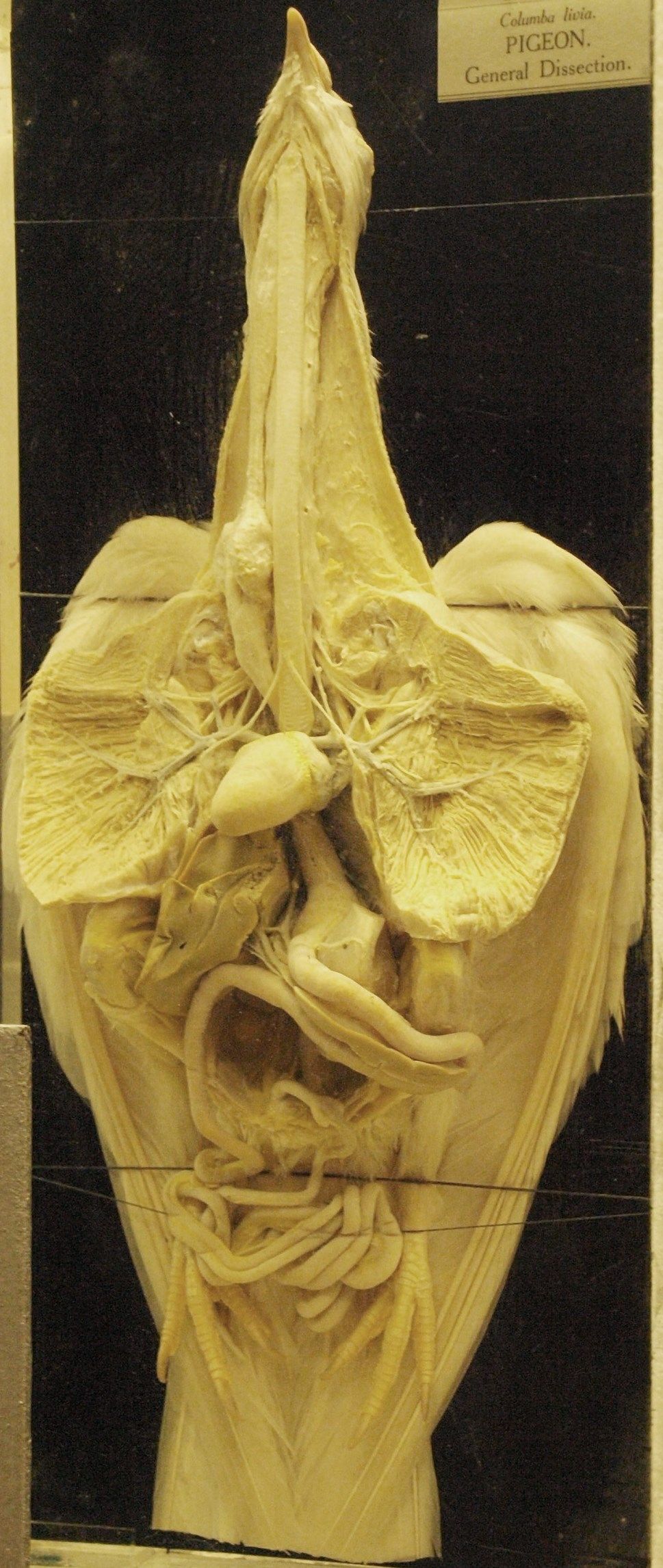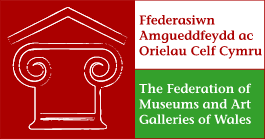Museum Education in Wales
, 9 August 2013

Dissected pigeon from the natural history collection of Swansea Museum, great for anatomical studies of birds.
Since the late 1990s, when the report ‘A Common Wealth’ argued that museum education needed more resources and a higher profile, there has been a shift within museums. Education is now viewed central to the role of museums and integrated into everything museums do. Museums have always been spaces of scholarship, and there is a clear link between scholarship and education. The purpose of museum education has to be to enhance the ability of visitors to understand and appreciate museum collections.
The new emphasis on learning in museums mainly comes from a change in philosophy within the museum sector, but it is also driven by funders such as the Heritage Lottery Fund, who encourage applicants to include specific learning elements within their projects. It is surely not a coincidence that the Clore Duffield Foundation has funded dozens of Learning Spaces in the past 15 years.
Local context of big concepts
The purpose of the ‘Linking Natural Science Collections in Wales’ project is to lead the way in the implementation of the Distributed National Collection in Wales. This, very much in line with the modern way of viewing museum education, naturally includes a symbiotic relationship with learning. One important way of using museum collections is to integrate them into the school curriculum. Schools should be able to use their local museum as a resource to support their teaching.
In Wales it has recently been proposed to modify the Cwricwlwm Cymreig, and to integrate the Welsh dimension into every subject taught in schools, not only History. In the centenary of the death of Alfred Russell Wallace, who was instrumental in developing the concept of Evolution to explain the diversity of life, schools up and down Wales ought to be able to call on museums for local examples. This local distinctiveness is important in a cultural context; it can also be used as a teaching aid, and this is where the potential of the Cwricwlwm Cymreig lies as a useful integration in the National Curriculum.
There are many positive local examples to illustrate the wider context, for instance Wallace (who was born in Llanbadoc), the naturalist Edward Lhuyd (or Llwyd, after whom the Snowdon lily is named, as well as the Welsh natural history organization Cymdeithas Edward Llwyd), Arthur Trueman's work on Coal Measure stratigraphy, T.N. George's contributions to Welsh geology, geneticist Steve Jones, Bill Frost's 'flying machine', etc. The work of these pioneers could be used to illustrate the subject and make it meaningful at local school level, as well as their personalities heralded as positive local role models.
Education resources

The Welsh Museums Federation, through the ‘Linking Collections’ project, will develop education resources for schools specifically linked to examples in local museums. These will be available online to teachers. Our aspiration is to create digital and web based resources, derived from museums, which are so easy to use, comprehensive and fascinating that they find a place at the heart of education.
Of course, while museums support formal learning, they can do much more than that and the educational activities of museums should not be limited to the school curriculum. Museums provide experiences and opportunities that many people lack; they stimulate discussion and debate; and they provoke responses ranging from joy and pleasure ('I have never seen that before') to disbelief and doubt ('I don't believe it and you have got to work hard to convince me that it's true'). All of this contributes to both our intellectual and emotional education and development and enhances our lexicon of experiences. And because we know that the habits of museum visitation are formed early in life and passed down from generation to generation, schools are ideally placed to support sustainable numbers of museum visits, and hence the focus on the school curriculum by the ‘Linking Natural Science Collections in Wales’ project.